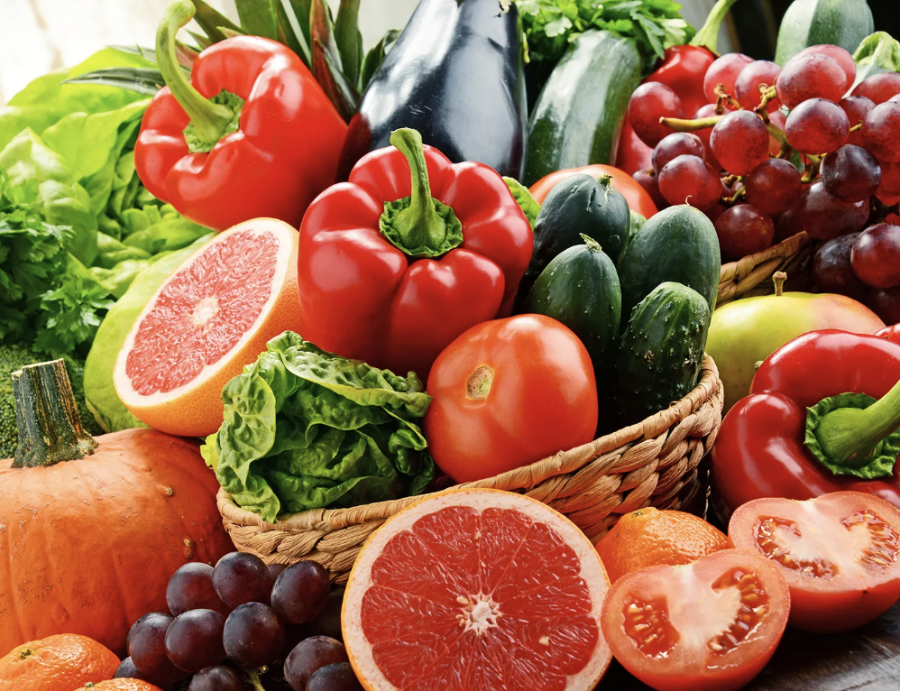Influence of Organic Food Products on Consumer Prices and Nutrition
December 7, 2022
Over the past decades, there has been a noticeably increased level of concerns regarding health and environmental awareness. In the current day, the world issues addressed by social activists are no longer confined to leaflet campaigns or protest marches. As consumers recognize that change is seen to be most efficient and productive through voting with the most important tool at their disposal, their wallets. The reasons to buy organic are recurring everywhere, and the consumption rates over the past years have been ever increasing. By choosing to purchase certified organic foods, more people are gradually becoming accustomed to the idea that organic choices benefit the environment, local economies, and public health, both on and off the farm. Some argue that it is only a matter of time before everyone instinctually gears towards the organic section, but a distinct division is still seen from those who favor inorganic produce.
Organic products are food items produced using processes without synthetics such as chemical fertilizers and pesticides. Inorganic foods, on the other hand, use synthetics to produce the finished food products. While a large movement exists that encourages the consumption of organic foods, some debate exists about the true benefits of eating organic foods. American appetite for organic foods has grown to fully three-quarters (75%) of people. This percentage consists of people who consume primarily organic foods, and, believe that organic produce is generally the better alternative for their health than other produce. This compares with 41% of consumers who claim that their diet consists of organic foods to a minor extent. All in all, when considering a person’s food ideologies, it is very closely connected with their food-purchasing habits based on financial means and overall perspective.
Harrison High School biology teacher, Mrs. Casey, offers her insight on synthetic foods based on her household’s financial situation and outside studies on the subject. A crucial component when deciding whether or not to emphasize the importance of purchasing organic products is simply based on the individual’s understanding and perspective on what it means to them for something to be organic. To Mrs. Casey, being organic means “the type of pesticides used on the crop has to be naturally derived, not synthetically produced in lab”, while the information she stated is greatly insightful, she continued by openly stating, “other factors of organic production I am not sure of.” The FDA certifies a product as organic using USDA organic regulations. This requires organic processors to have a minimum of 95% of the product organic. When a product has the “made with organic” labeling, additives must be approved as organic and the specified ingredients can include up to 30% non-organic agricultural ingredients. No ingredients or products may be produced using genetic engineering, sewage sludge, or ionizing radiation. This comment, however, surely does not only apply to Mrs. Casey, nearly 70 percent of young shoppers buy organic food, but only 20 percent thought they could perfectly define “organic”. Mrs. Casey’s decision to be an organic consumer based on her understanding is often conflicted by the “trade offs between inorganic and organic products”. This way of thinking decipher’s which food products Mrs.Casey prefers to be organic and the foods where her extent on consideration of the organic aspect dwindles. Mrs. Casey emphasized that “the fruits and vegetables I eat are mostly organic but certain ones I do not care so much about. Bananas, for example, I am much more lenient with but my bell peppers are basically always organic.” Frequently, consumers see organic and conventionally grown, or non-organic, bananas side by side at grocery stores and markets and see no visible difference. The nutrition profile of both conventional and organic bananas could differ between farms, however in general organic and inorganic bananas are both nutritious fruits full of fiber, energy-boosting carbs, vitamins, and minerals. Not much research opposes this claim nor largely supports the idea of organic bananas having more nutrients than conventional ones. Mrs. Casey’s argument in favor of organic bell peppers can be understood through the research conducted by EWG which found that nearly 90% of conventional sweet bell pepper samples contained pesticide residues. Since bell peppers’ skin is not thick enough to keep pesticides out, unlike bananas, they’re best bought organic. With this, it is obvious to conclude that the severity of choosing the organic route in stores, can vary depending on the product and its nutritional value.
Harrison High School health teacher, Mrs. Zanot, has prioritized health and nutrition since “college, when I was a track and field athlete. Even more so, when I started to learn and care more about types of foods I bought and ate as I began my profession.” Mrs. Zanot offers her perspective on the topic of organic produce from the point of view of an athlete and mother, as well as a teacher in the health department. As a consumer with “no problem finding what organic foods I am looking for”, she shops locally at “Wegmans and Whole Foods”, primarily avoiding “ supermarkets that have a limited amount of organic options.” When looking from a broader perspective, New Yorkers face soaring grocery prices as inflation reached a new 40-year high in the passing months. Despite Mrs. Zanot emphasis on “ a majority of fruits and veggies I buy are organic, and organic is seen consisting throughout my daily diet”, it is appropriate to address the issue of “ but they are more expensive and with current inflation I am more conscious about what is foods I prefer to be organic.” Examples being, “Berries, especially out of season organic berries are very expensive, lettuce, leaf greens (anything that does not have natural protected layer)” are all produce items that Mrs. Zanot is willing to purchase despite the rise of prices on such items. On the other hand, “conventional bananas at times, I don’t always buy organic, as well as pasta and rice. Occasionally I tend to be more attentive to organic when shopping for dairy products, fruits and vegetables.”Mrs. Zanot offered numerous sources that provide her regularly with information on organic and inorganic foods, such as “government websites, about certified organic and deeper research into what other countries do to certify organic foods.” As well as a wide range of “Documentaries, videos on Ted.com, Natural Geographic, Discovery.com, generally accessible public health resources.” Clearly, Mrs.Zanot’s “significant incentive” to buy foods that are certified organic overpowers the current financial aspect affecting the cost of this product because of the varied sources that provide her with a wide range of knowledge on the subject she obtains. With this information and the consideration of Mrs. Zanot’s profession, it is clear that a person with more information on the nutritional benefits of organic produce, largely advocates for how important it is in their life choices.
When evaluating the eating habits of American consumers, it is also important to look deeper into the relationship between parental nutritional habits and their influence on the dietary behaviors of their children. During the first stages of life, eating behaviors evolve as biological and behavioral processes are directed towards accommodating the needs for proper health and growth. Tanya Serpa, mother of Ava-Marie Serpa, demonstrates this parent-child relationship clearly and how inherited nutritional values have largely laid the foundation towards their households financial situation and needs. Mrs. Serpa claimed to be “never particularly conscious of what food I was fueling my body with until I had children and my health determined my ability to provide for my children.” Gradually, after becoming a mother figure, Mrs. Serpa’s eating habits shifted to “purposefully choosing foods that were not made with preservatives, or synthetics’ ‘ in efforts to suit the needs of being a fit mother. Mrs. Serpa reflected on how her current diet has shifted through the passing months as an impact to inflation boosting the prices of groceries. As a result, Mrs. Serpa has become more conscious of “the quantity of products I buy to maintain those living in my household. An example of this can be seen in the difference between my kitchen a few years ago to my kitchen now. Much more needs such as bread, eggs and milk and much less wants such as chips or soda.” Mrs. Serpa’s attention towards a healthier lifestyle has shifted to “prioritizing the financially affordable option, whether that option is organic or not ” Mrs. Serpa stated. Harrison High School junior, Ava-Marie Serpa, states that her eating habits developed from the patterns she grew accustomed to as she grew up “in a household that always had a balanced selection of food choices.” Considering that from a young age Mrs. Serpa prioritized a strong emphasis on healthy eating behaviors, Ava-Marie never felt that she was being entirely constricted from the foods she craved and the foods that fueled her body properly. In conclusion, a household that sustains a diet balanced with highly nutritious meals and customary produce, is dependent on both financial situation and the dietary preferences that become accustomed to those living in the home.
The efforts directed toward organic and inorganic dietary within the lives of today’s youth and adults are motivated primarily by the perception that organic foods are more nutritious, natural, and environmentally friendly than conventional foods. By encouraging organic produce through gradual contributions throughout someone’s diet, a huge difference will be made towards the decision of the overall population on buying organic and largely impact what is being fed to future generations. Social platforms will be the greatest influence on the decision-making of the public and should contribute by sharing more regarding naturally derived produce.
Photo from : Encyclopedia Brittanica








![[From left to right-Top row: Harison Fliegenspan, Talia Russo, Isis Leite, Micaela Thone, Rosella Paniccia. Bottom row: Maya Rolan, Eren Yoshimura, Audrey Cheung, Karinah Diaz]](https://thehuskyherald.org/wp-content/uploads/2025/02/IMG_0927.jpg)













